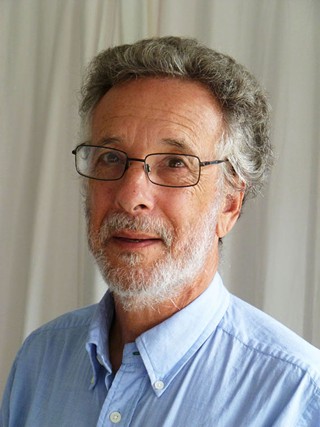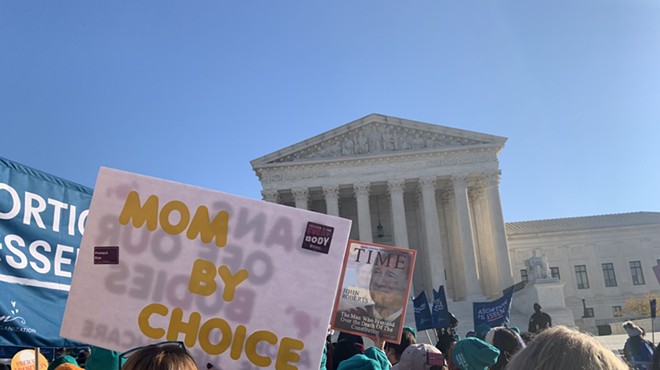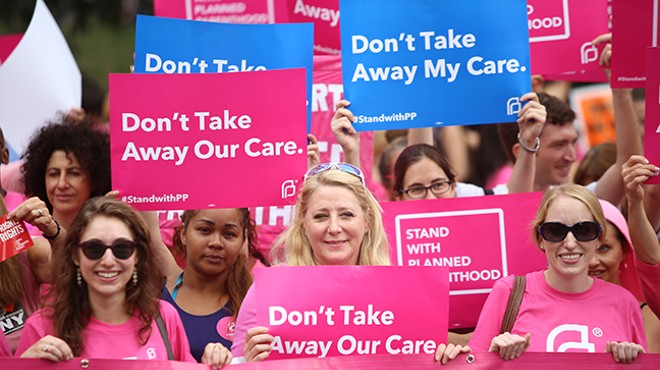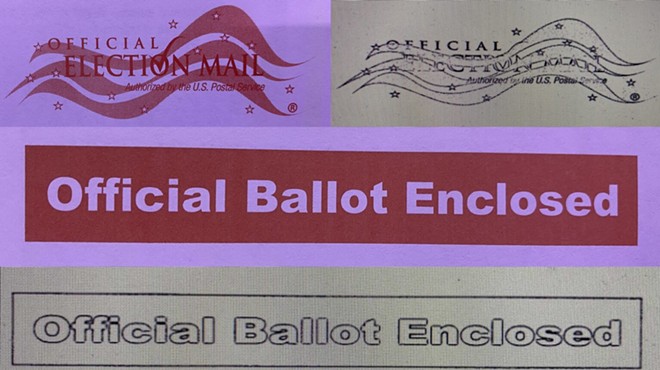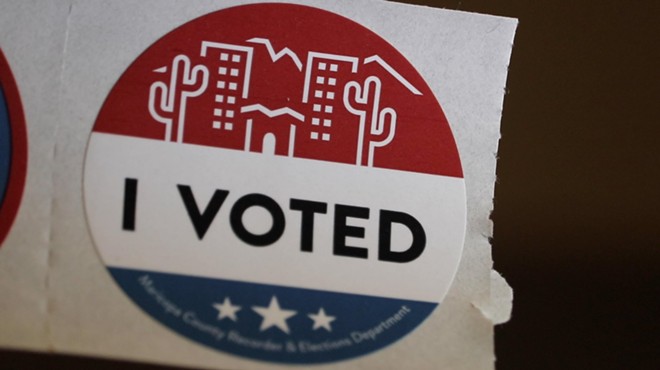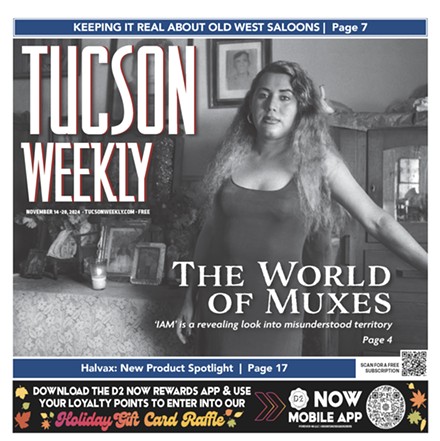Tuesday, October 25, 2016
Which TUSD Board Candidates Favor Closing More Schools?
If you're looking for TUSD board candidates who support closing more schools, they're out there, but they're not Cam Juarez and Kristel Foster. Two, maybe two-and-a-half candidates have said they think closing more schools is a strong possibility, even a good idea. One, maybe one-and-a-half of them are supported by the independent expenditure campaign, TUSD Kids First. But Cam and Kristel have both said in no uncertain terms, they don't plan to vote for closing any more schools.
So why are we seeing yellow roadway signs paid for by TKF that say, "Foster + Juarez = Closed Schools," signs whose purpose is to lead voters to think if they vote for Foster and Juarez, they're likely to see more school closures? The answer is, TKF wants to confuse and confound voters by using a time tested, cynical disinformation strategy. If you or some of your chosen candidates are accused of wanting to close schools and the accusation has some validity, throw it back at your opponents. "I don't want to close more schools. You want to close more schools!" Voters don't know who to believe, so the issue, which could be a problem at the polls, is nullified.
Let me try to set the record straight on who is for closing more schools and who is not, using the candidates' own words to decide where they stand. Here's the breakdown:
• For More School Closures: Brett Rustand, Rachel Sedgwick
• Against More School Closures: Kristel Foster, Cam Juarez, Betts Putnam-Hidalgo, Lori Riegel
• Both For and Against More School Closures: Mark Stegeman
As for TUSD Kids First, the evidence suggests strongly that its donors are in favor of more closures.
At the October forum for the board candidates at Palo Verde High, the candidates were asked where they stood on school closures.
Brett Rustand and Rachel Sedgwick were the only two who had positive things to say on the subject. Sedgwick stated in no uncertain terms, we need to close—she used the term "consolidate"—schools. Rustand hedged his bets. He said keeping all the schools open comes at a cost, and he portrayed himself as a realist who is willing to make hard decisions. Then he made the soft, easy decision to evade the question, saying "If" we need to close schools, well, he'll be there to help make the hard decisions. Rustand is the only one of the seven candidates who gave an ambiguous answer.
Four other candidates, Kristel Foster, Cam Juarez, Betts Putnam-Hidalgo and Lori Riegel, said they would not vote to close more schools. They had different ways of fleshing out their ideas about ways TUSD can utilize its schools better, but none of them hedged on their commitment to keeping the schools open.
I couldn't find anything about school closures on any of these candidates' websites or in other writings, so their statements at the Palo Verde forum are what I've got to go on.
Mark Stegeman, however, is another story.
Most of what Stegeman said at the forum was justifying the ten school closures that were approved on his watch in 2012 and saying Foster and Juarez "own" the decision as well, because they came on the board in 2013 and could have stopped the closures if they wanted to. He finished by saying he didn't agree with closing more schools, because TUSD had closed enough schools already. So, at the forum, Stegeman came out against additional closures.
However, in an open letter dated a week after the forum, Stegeman contradicted himself, saying TUSD may have closed enough schools already, but "isolated further closures may make sense," though he said it's not a pressing issue right now. He followed that statement with a paragraph about an "exception" to his wobbly stand on further closures, making a stronger argument for closing high schools.
Finally, let's look at TUSD Kids First whose sign wrongly accuses Foster and Juarez of supporting more school closures. Though the committee has formally endorsed three candidates, only two of them received campaign money from the five people who contributed a total of $31,500 to the committee. Stegeman received $1,000 from one of the five TKF funders. Brett Rustand received a total of $14,500 from three of them (Jim Click gave $12,500 of that, split between himself and his wife). Betts Putnam-Hidalgo, the third candidate endorsed on the TKF signs, received no money from the committee's benefactors. In other words, the one-and-a-half candidates who think closing more schools in the future may make sense were generously supported, while the other endorsed candidate who came out against more closures didn't receive a penny.
The TDK website includes a list of a number of things it thinks the TUSD board should do. Two items on the list are related to school closures. Item 8 states the board should "Address facility shortfalls," which includes "identifying opportunities to repurpose underutilized facilities." The wording of that last phrase is fancy (half of the words have five syllables) business-speak, the kind of language you use to impress the higher-ups in the firm, leaving yourself enough wiggle room that if you need to, you can explain what you meant to fit what the boss wants to hear. "Repurpose underutilized facilities." I suppose you can say that could mean a lot of things, but it's awfully close to saying the district should close schools with low enrollment.
Item 2 heads in the same direction. It refers to the 2014 Operational Efficiency Audit completed for the district by Gibson Consulting Group, saying the district should either explain how it plans to implement the audit's recommendations or explain why it disagrees with certain recommendations. In the audit's report summary, the first recommendation is, "TUSD should consider closing additional schools and eliminating portable building space at underutilized schools." Later when the report goes into more detail, it discusses the probable need to close more schools. Remember, this is in 2014, two years after ten schools had been closed. The table estimating cost savings from school closures is based on closing nine additional elementary schools and two high schools.
True, the Gibson Audit has lots of recommendations beyond school closings. True, TKF's "repurposing" schools could mean giving them other uses rather than closing them. And true, the financial support lavished on Rustand and Stegeman's campaigns could be for reasons other than their nods to the possibility of closing schools. But when you add everything together, it looks like those new roadside signs should be removed and replaced with more accurate ones that read, "Rustand + Stegeman + TUSD Kids First = Closed Schools."
A "Please, No 'That's-Not-What-The-Sign-Says' Excuses" Note: I'm a retired English teacher, someone who loves language and studies its use. I expect some commenters to argue that a sign reading "So-And-So Equals Closed Schools" could be read literally to mean they were partially responsible for closing schools in the past, not that they want to close schools in the future. To which I say, Give me a break. Get real. The language of campaigns, like the language of advertising, like the language of poetry, is chosen to carry an impact beyond what you get from a literal parsing of the words. The intended impact of the words on the sign is clear, and misleading. Anyone who "equals" closed schools is for closing schools, in the past, in the present and in the future. It's dishonest to argue otherwise.
So why are we seeing yellow roadway signs paid for by TKF that say, "Foster + Juarez = Closed Schools," signs whose purpose is to lead voters to think if they vote for Foster and Juarez, they're likely to see more school closures? The answer is, TKF wants to confuse and confound voters by using a time tested, cynical disinformation strategy. If you or some of your chosen candidates are accused of wanting to close schools and the accusation has some validity, throw it back at your opponents. "I don't want to close more schools. You want to close more schools!" Voters don't know who to believe, so the issue, which could be a problem at the polls, is nullified.
Let me try to set the record straight on who is for closing more schools and who is not, using the candidates' own words to decide where they stand. Here's the breakdown:
• For More School Closures: Brett Rustand, Rachel Sedgwick
• Against More School Closures: Kristel Foster, Cam Juarez, Betts Putnam-Hidalgo, Lori Riegel
• Both For and Against More School Closures: Mark Stegeman
As for TUSD Kids First, the evidence suggests strongly that its donors are in favor of more closures.
At the October forum for the board candidates at Palo Verde High, the candidates were asked where they stood on school closures.
Brett Rustand and Rachel Sedgwick were the only two who had positive things to say on the subject. Sedgwick stated in no uncertain terms, we need to close—she used the term "consolidate"—schools. Rustand hedged his bets. He said keeping all the schools open comes at a cost, and he portrayed himself as a realist who is willing to make hard decisions. Then he made the soft, easy decision to evade the question, saying "If" we need to close schools, well, he'll be there to help make the hard decisions. Rustand is the only one of the seven candidates who gave an ambiguous answer.
Four other candidates, Kristel Foster, Cam Juarez, Betts Putnam-Hidalgo and Lori Riegel, said they would not vote to close more schools. They had different ways of fleshing out their ideas about ways TUSD can utilize its schools better, but none of them hedged on their commitment to keeping the schools open.
I couldn't find anything about school closures on any of these candidates' websites or in other writings, so their statements at the Palo Verde forum are what I've got to go on.
Mark Stegeman, however, is another story.
Most of what Stegeman said at the forum was justifying the ten school closures that were approved on his watch in 2012 and saying Foster and Juarez "own" the decision as well, because they came on the board in 2013 and could have stopped the closures if they wanted to. He finished by saying he didn't agree with closing more schools, because TUSD had closed enough schools already. So, at the forum, Stegeman came out against additional closures.
However, in an open letter dated a week after the forum, Stegeman contradicted himself, saying TUSD may have closed enough schools already, but "isolated further closures may make sense," though he said it's not a pressing issue right now. He followed that statement with a paragraph about an "exception" to his wobbly stand on further closures, making a stronger argument for closing high schools.
The one exception, as I have said for years, lies in the ten major high schools. The previous closure rounds excluded the major high schools, and Pedicone left before we did any serious analysis of that part. High school enrollment has held up fairly well, which argues against closure, but it makes sense to study the potential costs and benefits of high school consolidation.Putting his various statements together, Stegeman said he was against more school closures, except for maybe isolated school closures, adding the exception that we need to look more closely at some high school closures. If it's not clear by now, Stegeman is the half a candidate I referred to at the beginning of the post.
Finally, let's look at TUSD Kids First whose sign wrongly accuses Foster and Juarez of supporting more school closures. Though the committee has formally endorsed three candidates, only two of them received campaign money from the five people who contributed a total of $31,500 to the committee. Stegeman received $1,000 from one of the five TKF funders. Brett Rustand received a total of $14,500 from three of them (Jim Click gave $12,500 of that, split between himself and his wife). Betts Putnam-Hidalgo, the third candidate endorsed on the TKF signs, received no money from the committee's benefactors. In other words, the one-and-a-half candidates who think closing more schools in the future may make sense were generously supported, while the other endorsed candidate who came out against more closures didn't receive a penny.
The TDK website includes a list of a number of things it thinks the TUSD board should do. Two items on the list are related to school closures. Item 8 states the board should "Address facility shortfalls," which includes "identifying opportunities to repurpose underutilized facilities." The wording of that last phrase is fancy (half of the words have five syllables) business-speak, the kind of language you use to impress the higher-ups in the firm, leaving yourself enough wiggle room that if you need to, you can explain what you meant to fit what the boss wants to hear. "Repurpose underutilized facilities." I suppose you can say that could mean a lot of things, but it's awfully close to saying the district should close schools with low enrollment.
Item 2 heads in the same direction. It refers to the 2014 Operational Efficiency Audit completed for the district by Gibson Consulting Group, saying the district should either explain how it plans to implement the audit's recommendations or explain why it disagrees with certain recommendations. In the audit's report summary, the first recommendation is, "TUSD should consider closing additional schools and eliminating portable building space at underutilized schools." Later when the report goes into more detail, it discusses the probable need to close more schools. Remember, this is in 2014, two years after ten schools had been closed. The table estimating cost savings from school closures is based on closing nine additional elementary schools and two high schools.
True, the Gibson Audit has lots of recommendations beyond school closings. True, TKF's "repurposing" schools could mean giving them other uses rather than closing them. And true, the financial support lavished on Rustand and Stegeman's campaigns could be for reasons other than their nods to the possibility of closing schools. But when you add everything together, it looks like those new roadside signs should be removed and replaced with more accurate ones that read, "Rustand + Stegeman + TUSD Kids First = Closed Schools."
A "Please, No 'That's-Not-What-The-Sign-Says' Excuses" Note: I'm a retired English teacher, someone who loves language and studies its use. I expect some commenters to argue that a sign reading "So-And-So Equals Closed Schools" could be read literally to mean they were partially responsible for closing schools in the past, not that they want to close schools in the future. To which I say, Give me a break. Get real. The language of campaigns, like the language of advertising, like the language of poetry, is chosen to carry an impact beyond what you get from a literal parsing of the words. The intended impact of the words on the sign is clear, and misleading. Anyone who "equals" closed schools is for closing schools, in the past, in the present and in the future. It's dishonest to argue otherwise.
Tags: TUSD Kids First , TUSD governing board , Elections , Candidates


